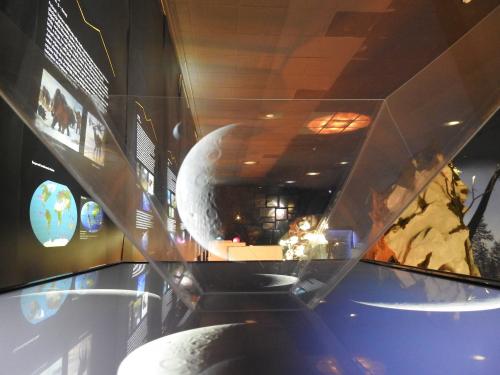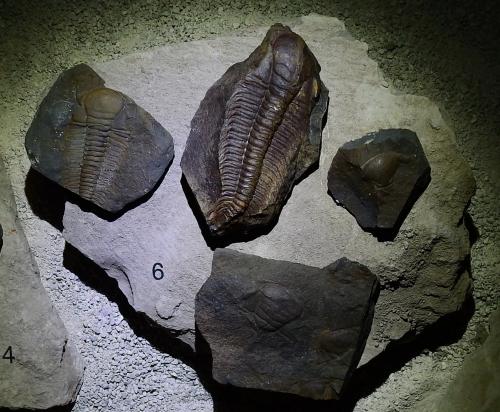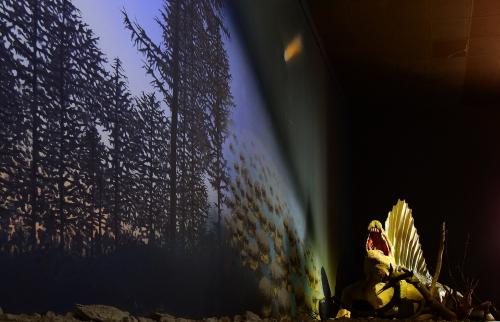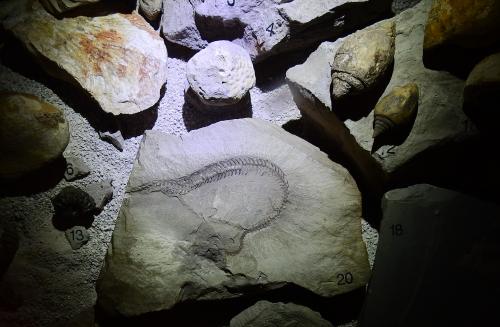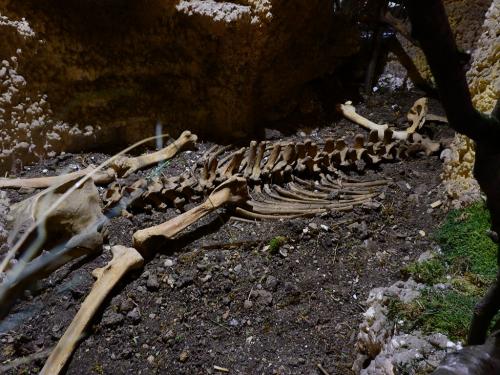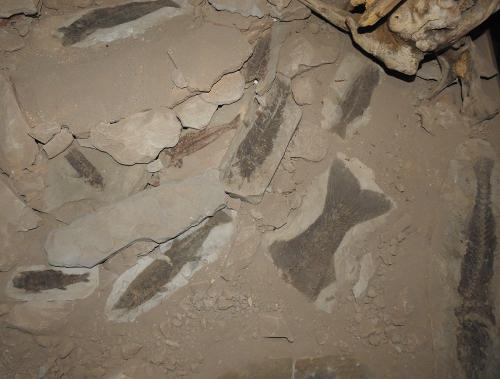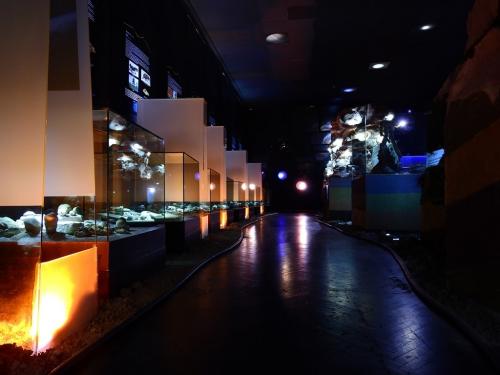You are here
Fossils of Sarajevo and vicinity
Exhibition Fossils of Sarajevo and vicinity, displayed at the Department of Natural History, gives the visitors an opportunity to learn about geological past and development of life on Earth, with a special focus on fossils of Sarajevo and its vicinity.
The exhibition is composed of two thematic units. The first unit follows development of life on Earth, where each geological period is presented with informative text and specimens of typical representatives of flora and fauna. Over the long geological history life on Earth has survived in spite of five global catastrophes, during which massive extinction of plants and animals happened. Fossilized remnants of extinct species are displayed in the exhibition, as well as the attractive model of Dimetrodon, animal from the synapsid group that lived during the Permian (299-252 million years ago), and became extinct before the dinosaurs had evolved.
The second thematic unit of the exhibition shows fossils found in Sarajevo and vicinity. Among the oldest finds are the fossils from Mesozoic (252-66 million years ago), which testify on the existence of deep sea in the area that Sarajevo occupies today. One of the exhibits representing that period in the exhibition is the unique fossil of a shark’s fin (Acronemus bosniensis) from Triassic (252-201 million years ago), found at the locality of Palež on Trebević Mountain near Sarajevo.
Finds of pteridophyta, echinoderms, cephalopods, shells and fish from Prača and other sites south-eastern from Sarajevo, are the representatives of flora and fauna that lived during the Palaeozoic (430-359 million years ago). The Cenozoic (66-0 million years ago) is represented with fossils of vertebrates from the Neogene and the Quaternary. Fossils of fish, found in the area of today’s residential quarter of Ciglane in Sarajevo, prove that a spatial lake existed in this area during the Neogene (23-2.58 million years ago).
Among the youngest fossils in the exhibition are the remnants of a cave bear (Ursus spelaeus) from the Quaternary, found in the cave Megara on Bjelašnica Mountain, with estimated age of 2.58-0 million years.
The fossils lead us to a journey through the geological past of Sarajevo and vicinity, discovering ancient secrets, and offering at the same time a view of the future life on Earth.
